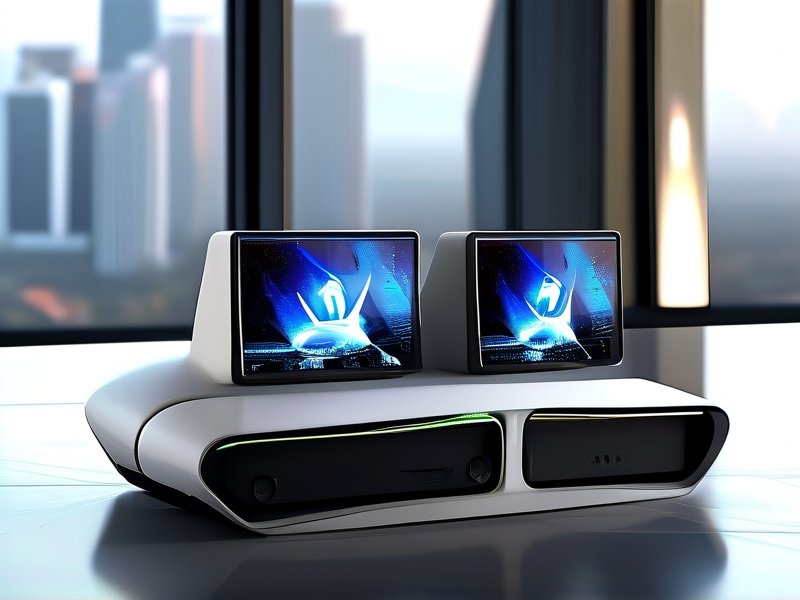
Introduction: The Rise of Cloud PCs in a Remote-First World
In an era where work happens across continents and time zones, the demand for seamless, high-performance computing has never been higher. Traditional laptops and desktops often struggle to balance portability with power, leaving professionals in industries like design, engineering, and data science chasing solutions. Enter cloud PCs—a game-changing technology that delivers enterprise-grade computing resources directly to users via the internet. Platforms like Edgenode Cloud PC exemplify this innovation, offering scalable power, flexibility, and security. This article explores how next-gen remote workstations are redefining productivity and accessibility.
What Are Cloud PCs, and Why Do They Matter?
A cloud PC is a virtualized computing environment hosted in the cloud, accessible via any internet-connected device. Unlike traditional on-premise workstations, cloud PCs leverage the power of data centers, delivering high-performance capabilities such as GPU acceleration, multi-tasking, and software compatibility—without the need for physical hardware. The benefits are transformative:
- Scalability: Users can instantly upgrade or downgrade compute resources (CPU, RAM, storage) based on workload demands.
- Accessibility: Work seamlessly from anywhere using a browser or lightweight client, eliminating the need for bulky hardware.
- Cost Efficiency: Pay-as-you-go models reduce upfront investments in hardware and IT infrastructure.
- Security: Data remains stored in secure, centralized servers, minimizing risks of physical theft or device failure.
Consider a graphic designer working on a high-resolution project while traveling. With a cloud PC, they can access a workstation configured with a powerful GPU, run Adobe Creative Suite, and collaborate in real time—all from a tablet or Chromebook. For businesses, this eliminates the logistical headache of maintaining fleets of physical devices.
How Next-Gen Cloud PCs Work
Modern cloud PCs rely on advanced technologies to deliver low-latency performance and user-friendly experiences. Here’s a breakdown of their core components:
- Virtualization Platforms: Technologies like VMware Horizon or Microsoft Azure Virtual Desktop create isolated virtual machines (VMs) for each user, ensuring resource allocation and security.
- Edge Computing Integration: Solutions like Edgenode Cloud PC use edge nodes to reduce latency by processing data closer to the user, ideal for latency-sensitive tasks like video editing or AI workloads.
- Secure Access: Multi-factor authentication (MFA), encryption, and role-based access controls protect data in transit and at rest.
- Optimized User Experience: Features such as GPU passthrough, persistent sessions, and bandwidth optimization ensure smooth performance even on slower networks.
For example, Edgenode Cloud PC’s edge infrastructure allows users in remote locations to enjoy near-native performance for applications like AutoCAD or Blender. The platform’s GPU-accelerated instances let engineers run simulations or designers render 3D models without waiting for local hardware constraints.
Practical Tips for Maximizing Cloud PC Performance
To get the most out of cloud PCs, users and organizations should adopt best practices:
- Choose the Right Configuration: Match your workload to the cloud PC’s specs. A basic instance might suffice for office tasks, while GPU-enabled instances are critical for rendering or machine learning.
- Optimize Network Settings: Use wired connections for critical workloads, and ensure your provider offers low-latency edge nodes. Compress non-critical data (e.g., emails) to free up bandwidth for high-priority tasks.
- Leverage Persistent Sessions: Save open applications and files across sessions to avoid redundancy. This is especially useful for long-term projects.
- Integrate with Collaboration Tools: Pair your cloud PC with platforms like Slack or Microsoft Teams for real-time file sharing and screen sharing.
- Monitor Performance Metrics: Use dashboards to track CPU/RAM usage and adjust resources dynamically. Most providers, including Edgenode, offer intuitive control panels for this.
Tip: For teams, consider centralized management tools to standardize software deployments and enforce security policies. This streamlines onboarding and reduces IT overhead.
Case Studies: Industries Transformed by Cloud PCs
Cloud PCs are revolutionizing industries where mobility and performance intersect:
- Architecture and Engineering: Firms like Global Designs Inc. use cloud PCs to let architects access BIM (Building Information Modeling) software from any location, accelerating project timelines.
- Remote Healthcare: Medical professionals leverage GPU-powered cloud PCs to analyze medical imaging data in real time during teleconsultations.
- Education: Universities provide students with virtual labs equipped with specialized software, breaking down hardware barriers for STEM courses.
In one example, a financial services company reduced IT costs by 40% after migrating to cloud PCs, eliminating the need for on-site hardware maintenance and supporting a fully remote workforce.
Conclusion: The Future of Work is Cloud-Native
Next-gen cloud PCs like Edgenode Cloud PC are not just a trend—they’re a foundational shift in how we approach work. As remote and hybrid models become the norm, the ability to access enterprise-grade computing from anywhere will be non-negotiable. By prioritizing scalability, security, and user experience, cloud PCs empower individuals and organizations to innovate without limits. Whether you’re a freelancer needing a burst of computing power or a global enterprise standardizing workflows, the cloud workstation revolution is here—and it’s time to embrace it.
